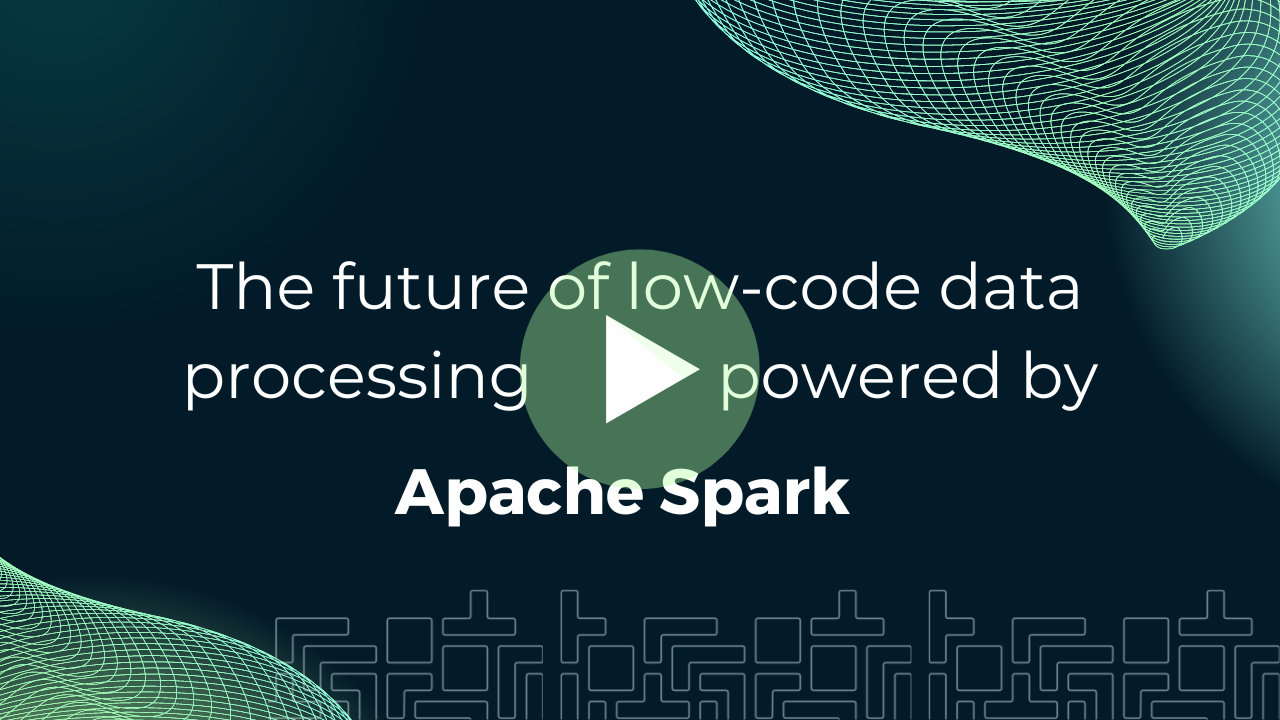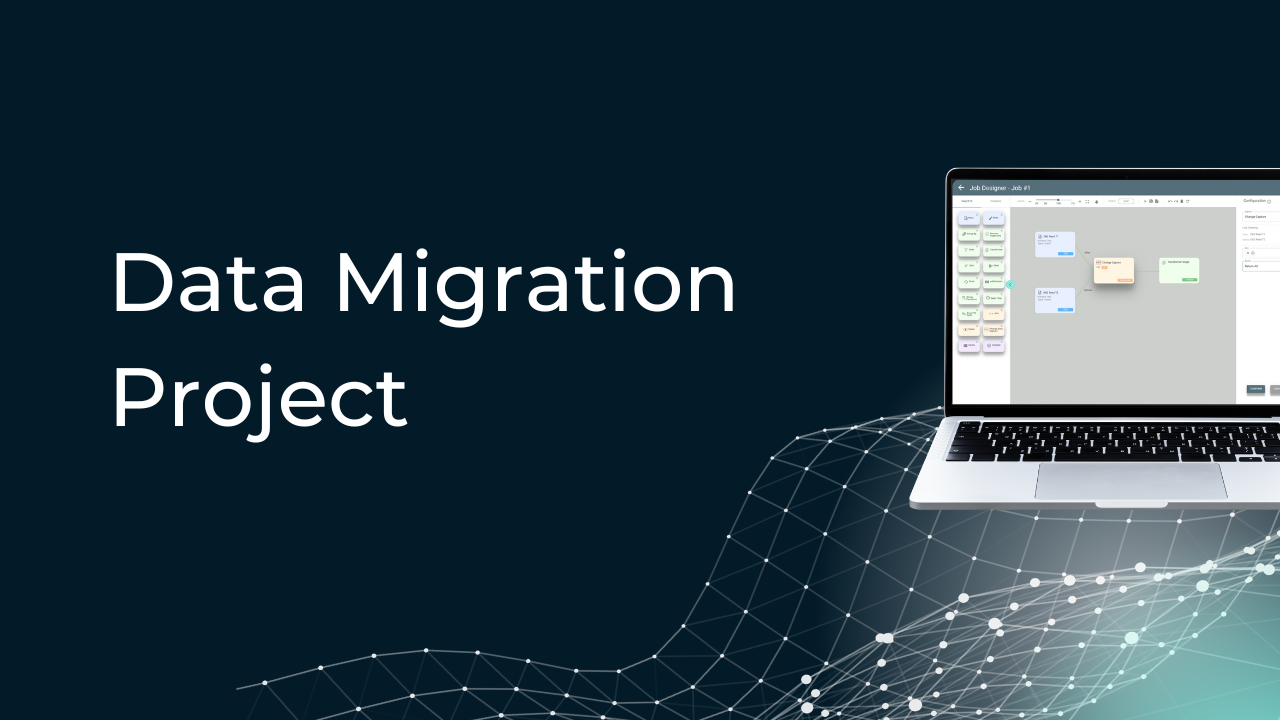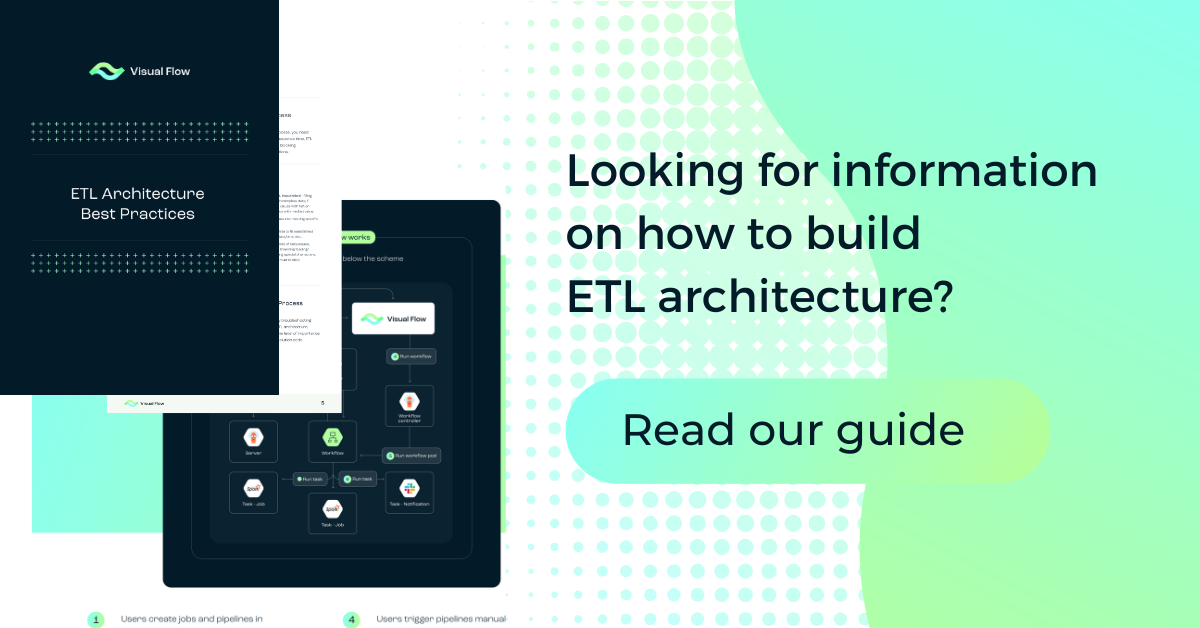Table of Content:
Table of Content:


Data volumes are constantly growing in today’s world. Powerful tools like Google BigQuery are serverless and can efficiently manage huge amounts of data. However, the need for a powerful ETL tool remains. ETL means “extract, transform, load”. We tell you how to make data processing smooth and seamless, and how to choose the best ETL tool for BigQuery.
How Data Integration from BigQuery to a Data Warehouse Can Help
BigQuery alone has powerful functionality to process large volumes of data and provide real-time analysis. But it is data integration functionality that awakens extra and so-needed power in BigQuery for the smoothest data transition between sources and warehouses. The incorporation of ETL tools allows the extraction of both structured and unstructured data from BigQuery and the transformation of it according to specific needs for further loading the processed data into a warehouse. Let’s see how it affects the data management:
- Centralization. When BigQuery becomes consolidated with other sources, it creates a unified view of business operations which eases the access and analysis of data, streamlines the workflow, and greatly reduces the probability of errors.
- Greater analytics. Having BigQuery integrated with a warehouse brings flexibility to the analyzing processes by connecting different BI tools, creating deeper and thereby more valuable insights. By establishing relations to other platforms like Tableau or Looker, more meaningful reports become available which aids the decision-making argumentation.
- Saving money. Transferring some amount of data from BigQuery to cheaper storage options will save on storage fees. This financial decision is especially significant with long-term data storage.
Having relevant data gathered in one place eases analysis time and allows quick reaction to fast-changing market trends and customers’ needs, thereby breathing extra agility into the business.
How to Choose the Right BigQuery ETL Solution
The quality of your data operations directly depends on the instruments you use, that’s why you want to choose the right ETL tool for BigQuery. While making your choice, keep in mind the following criteria to be pleased with the result:
- Compatibility. The instrument is necessary to support Google BigQuery as both source and destination. Make sure the tool has native connectors to establish the smoothest integration.
- Transformation power. You want to look for advanced transformation functionality in your ETL tool. Check if it can handle data errors, map data to BigQuery format, and convert complex data into a more simplified structure for smoother querying.
- Real-time processing. The majority of today’s user cases revolve around real-time data updating. Make sure that your tool is capable of real-time or at least near real-time (smallest delay) processing to get the most up-to-date insights.
- Ease. The best ETL instrument for you won’t require coding skills. It must have functionality friendly enough to be operated even by a non-technical user with functions like a drag-and-drop interface or intuitive query-building features.
- Adjustability. Your data will surely grow over time and that’s why your ETL instrument must be able to handle the growing amounts of data without breaking down or dropping performance.
- Security. The tool must meet the Advanced Encryption Standards (algorithms like AES-256), follow the regulations like GDPR and CCPA to name a couple, have permission control like multi-factor authentification, and provide transparency of who got access to the system, as well as other tracking possibilities.
Always consider the data volume as it may affect the price. Pay attention to the price model of the instrument as some choices charge per operation, while others depend on the data volume.
The Best BigQuery ETL Tools
Among the variety of ETL tools designed to work with BigQuery, some are more distinct due to their prominent features. Let’s get a clear picture of them:
- Fivetran.
Acknowledged for simplicity and accessibility, Fivetran became a popular choice for all kinds of businesses. One of the stand-out features of Fivetran is the availability of pre-built connectors for various sources of data, and Google BigQuery is one of them. Another beneficial feature of this tool is real-time data synchronization. Schema drift detection automatically adjusts to alterations in the source schema without manual input.
- Stitch.
Stitch is an advanced ETL platform designed for developers, data analysts, and engineers. Known for its flexibility, Stitch easily integrates with BigQuery and supports a great variety of data sources. Stitch has vast transformation functionality with lots of settings to adjust transformation processes to your needs. Also, its pricing per-usage model has proven to be financially relieving, which is extra good for small companies.
- Matillion.
A cloud-based ETL instrument, Matillion is designed specifically for cloud data platforms, such as Google BigQuery. It best fits businesses aiming to conduct massive transformations within BigQuery. The integration capability of Matillion allows the user to perform data transformations directly in the BigQuery environment.
- Hevo Data.
Hevo Data is a no-code platform intended to integrate with BigQuery to extract data from various sources, transform it, and load it into BigQuery with the least manual intervention. One of its prominent features is the protection of data during the extraction and load processes from faults.
- Airbyte.
Being an open-source ETL system, Airbyte is enhanced with a community-driven connector development system, which provides a firm integration with Google BigQuery and allows users to create custom data pipelines and connectors. Community-supported model also opens doors to new pre-built connectors and this kind of flexibility is exactly what a company with diverse data extraction requirements will appreciate the most.
- Visual Flow for Databricks.
Designed for Darabricks, the ETL tool by VisualFlow is well-known for its integration capabilities within the BigQuery environment with some extra benefits. Its user-friendly interface makes this instrument stand out in the eyes of those who seek a simple experience but fruitful results. With the least coding needed, you can easily butter up the entire data process for well-timed and insightful output. Check out Visual Flow for Databricks ETL and get into the action right away.
Types of Data You Can Extract from BigQuery
What makes Google BigQuerry especially agile for the majority of user cases is the support for an extraordinarily large number of data formats and types. Below are just a few common types of data that ETL tools will help you extract from BigQuery:
- Transactional data. This could be sales records, customer orders, or banking transactions.
- Web and application logs. Logs generated from websites or apps can be analyzed to monitor performance or user behavior.
- Sensor and IoT data. IoT devices generate vast amounts of data, often stored in BigQuery for analysis.
- Marketing data. Data from marketing campaigns, social media, and user interactions with digital ads can be extracted for further analysis.
Also, you have to know that with advanced ETL tools help, unstructured data like images, audio, and video can also be processed and transformed for analysis.
Starting with Data Extraction from BigQuery Quickly
A wide variety of ETL tools come with built-in connectors and templates for the most plausible experience. This is especially beneficial for businesses that want to quickly dive into using BigQuery without dealing with complex setup processes. Many ETL platforms like Fivetran, Talend, and Hevo Data offer seamless integrations with BigQuery, allowing you to get up and running in just a few clicks. This emerging usually consists of the following steps:
- Connector set-up. Use pre-configured BigQuery connectors to establish a connection between BigQuery and your ETL tool. These connectors simplify authentication and permissions setup, reducing the time it takes to establish a secure link.
- Data sources definition. Specify which data tables or views you want to extract. Many tools provide automatic schema detection, making it easier to map your data accurately.
- Transformations implementation. Define the transformation mechanism (filtering, aggregation, formatting, etc.) by utilizing the ETL tool’s interface. Most ETL tools provide drag-and-drop features for transforming data without needing advanced SQL skills.
- Warehouse loading. Select the target destination, which is typically a cloud-based data warehouse, and begin the loading process. Scheduling automated extractions ensures that your data stays fresh without manual intervention.
Usually, these steps are achievable almost without advanced technical knowledge. Be sure to check our points toward the migration to the cloud system, and leverage resources like documentation and community support to streamline the process further.
Are ETL Tools Necessary for BigQuery?
BigQuery is known for its ability to handle massive datasets and deliver fast querying, but ETL (Extract, Transform, Load) tools are crucial in enhancing its functionality. These tools help in cleaning, structuring, and transforming raw data to fit specific business needs, turning unorganized information into valuable insights. Without ETL tools, users would have to rely heavily on manual coding and complex SQL scripts to prepare data, which can be time-consuming and error-prone. ETL tools streamline this process by automating data preparation, allowing even non-technical teams to manage large datasets efficiently. This helps reduce the likelihood of errors, saving time and resources while ensuring data accuracy.
ETL tools also enable seamless integration of various data sources into BigQuery, allowing businesses to consolidate information from multiple systems. As data becomes increasingly complex, the need for efficient ETL processes becomes more critical. ETL tools also offer scheduling, monitoring, and auditing capabilities, further enhancing the reliability and performance of BigQuery deployments.
Key Features of Google BigQuery ETL Tools
There are essential features you should pay attention to when selecting a Google BigQuery storage ETL tools:
- Native BigQuery integration. Enough said the tool should provide built-in connectors to Google BigQuery to minimize the manual input into the integration process.
- Data transformation mechanics. Rich transformation functionality is not the least essential here, and this includes the support for SQL-based transformations and user-defined functions.
- If the business requires fresh up-to-date insights, real-time ETL pipelines are something to pay close attention to.
- To lower the entry barrier for non-technical users and minimize the possibility of errors, an intuitive interface is a good addition, to say the least. Consider looking for drag-and-drop or visual interface features that will make the ETL process more accessible.
Also, a good ETL tool offers automation functionality for advanced scheduling and workflow management.
Simplifying Data Transformation in BigQuery
BigQuery’s powerful SQL engine enables data transformation directly within the platform, but ETL (Extract, Transform, Load) tools take this a step further by making the process more accessible and efficient. Tools like Matillion, Fivetran, and Stitch offer intuitive, user-friendly interfaces that allow users to handle complex transformations—such as joins, filtering, and aggregations—without needing to write or maintain complex SQL queries. This drastically reduces the technical barrier, empowering both technical and non-technical users to engage with data transformations easily.
Moreover, most modern ETL in BigQuery tools provide data lineage tracking, which offers visibility into how data flows through the transformation pipeline, highlighting each step where data is modified. This transparency is invaluable for maintaining the integrity of your data, as it simplifies auditing, troubleshooting, and compliance with regulations like GDPR or HIPAA. In short, ETL tools not only simplify data transformations in BigQuery but also improve data quality, operational efficiency, and compliance efforts.
Final thoughts
Selecting the right BigQuery ETL tool is critical for businesses that aim to maximize the power of Google BigQuery for data analytics. By integrating BigQuery with a data warehouse using a suitable ETL tool, businesses can centralize their data, transform it into a usable format, and extract valuable insights quickly. With the right tool, whether it’s Fivetran, Stitch, or Matillion, the process becomes well-oiled, agile enough, and efficient, which allows organizations to focus more on analysis and less on data processing.
Whether you need real-time processing, advanced data transformations, or a user-friendly interface, there’s an ETL BigQuery tool that fits your needs. As you explore options, keep in mind the adjustability of the tool, its compatibility with your existing tech stack, and the specific features that align with your use cases. Each of the tools mentioned above can significantly reduce the complexity of managing data in BigQuery, while also keeping data integrity and security.
No matter the data type, should it be transactional data, weblogs, or unstructured IoT data, the right ETL tool will make the difference between laborious manual processes and streamlined, automated workflows. It’s also essential to make sure that your ETL platform is future-proof, as you need to adjust your growing data without worrying about performance bottlenecks.
If you’re just getting started, look for the pre-built connectors and user-friendly interfaces of these tools to integrate your data from BigQuery with minimal setup time and faults. As data becomes an increasingly valuable asset, having the right tools to extract, transform, and load that data will be vital for leading business intelligence and making data-driven decisions.
For advanced strategies and customized pipeline solutions, ETL Migration Consulting Services offers support to ensure a smooth transition to cloud-based ETL infrastructures.
Choosing an ETL tool is all about finding a solution that aligns with your business growth goals. Make sure the choice provides the flexibility and power you need to solve today’s data challenges and will remain relevant going forward.
Contact us































































